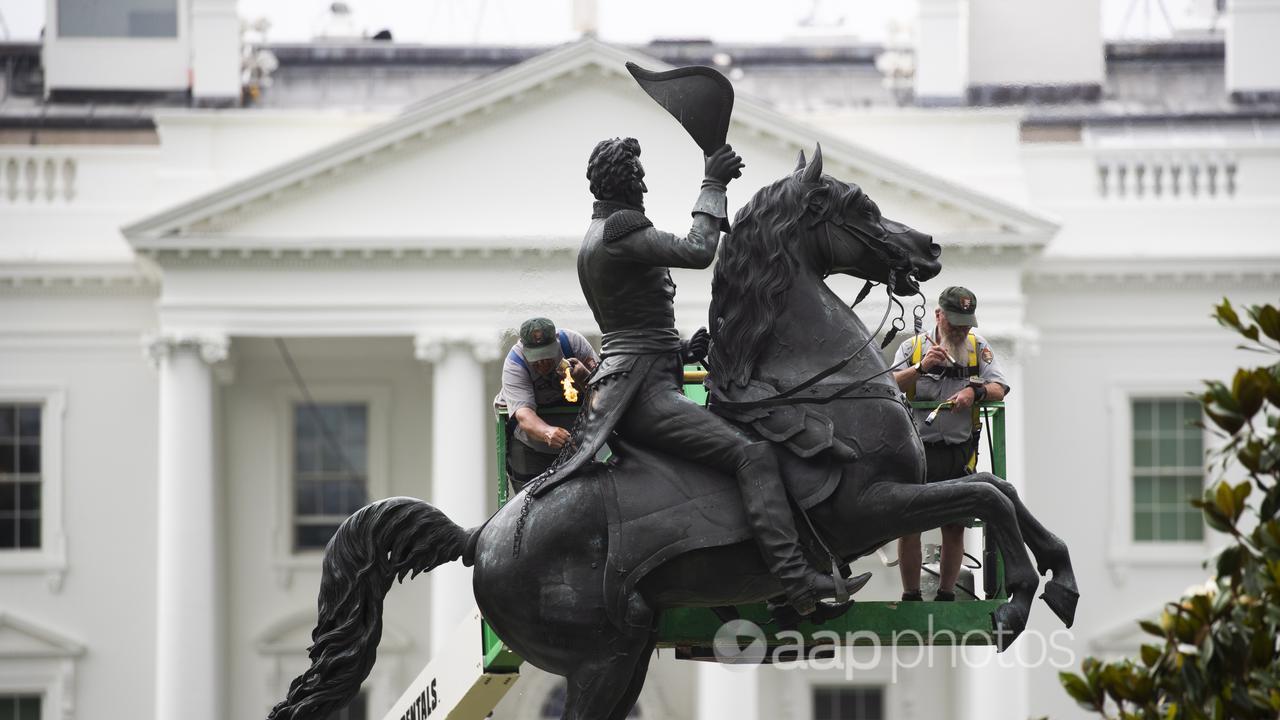A Facebook post on an Australian page claims the hoof placement on military equestrian statues provides a special code to understanding what happened to the rider in battle.
But the post (screenshot here), with an accompanying photo of a 1950 bronze statue of Australian World War I hero Sir John Monash astride a horse, doesn’t have a leg to stand on.
The military “hoof code” has been perpetuated for decades, with the Australian War Memorial telling AAP FactCheck that it’s a longstanding urban myth.
The May 1 post, featuring the Monash statue in Melbourne’s Kings Domain, states: “Did you know that a statue with a horse with all four legs on the ground means the rider survived without a scratch? One leg lifted means the rider was injured in battle, and a rearing horse tells us the rider died in battle.”
The post’s text was later changed and replaced with an apology after numerous comments pointed out the hoof placement theory was false.
Experts agreed the “hoof code” is a case of horsing around and that leg placements in military equine statues do not show a rider’s fate in battle.
A spokesman for the Australian War Memorial (AWM) told AAP FactCheck in an email: “Our curators have advised this (hoof code) is an urban myth. Even the various Gettysburg equestrian statues (eight famous statues in a military park referencing the 1863 battle in Pennsylvania by Union and Confederate forces during the American Civil War that had largest number of casualties of the war) don’t all conform to the ‘rule’.”
Coincidently, the Monash statue adheres to the mythical code as the WWI military commander’s steed has all four feet firmly on the ground, however the AWM pointed out that Sir John “never rode a horse in battle”.
Equestrian statue expert Kees Van Tilburg has visited more than 50 countries photographing horse statuary and is author of the book, From Marcus Aurelius to Kim Jong-il: The Story of Equestrian Statues Throughout the Ages.
Van Tilburg told a popular culture website: “A nonsense story coming up from time to time is that a statue contains a code whereby the rider’s fate can be determined by noting how many hooves the horse has raised. For example one hoof raised indicates wounded in battle, two raised hooves death in battle. Needless to say, even if such a code ever existed, almost no sculptor respected it.”
The hoof code, also debunked here, here and here, is believed to have its origins in Gettysburg National Military Park, according to an article in The Washington Post.
US sculptor Gary Casteel told the Post leg placement merely showcased artistic skill: “Gettysburg artists didn’t employ any secret symbolism when they created their works. They just wanted the technical challenge of getting two feet off the ground, or the aesthetic impression of a single raised hoof.”
Myth-busting website Snopes points out: “Washington is home to more equestrian statues than any other city in the nation, and it’s significant that perhaps only 10 out of 30 or more follow the (hoof code) convention.”
Other examples debunking the code on US and European statues can be seen in online articles here and here. Both feature the famous bronze statue of US president and army general Andrew Jackson in Lafayette Park, in front of the White House. The rearing horse has both front legs in the air, but Jackson died of natural causes aged 78, not in battle.
Examples debunking the code for London statues are detailed here.
Equestrian statues date back to ancient Rome, when military leaders and emperors shelled out for bronze tributes. However as Van Tilburg notes: “All the equestrian statues of the Roman period, with the exception of the one depicting Marcus Aurelius, were destroyed. They were melted down because the bronze was needed for other statues or coins”.
The Verdict
The claim that the leg placement in equestrian military statues indicates whether the rider was injured or died in battle is false. The Australian War Memorial told AAP FactCheck the “hoof code” is a long-running urban myth. Numerous sources show there is no evidence to support the claim.
False – The claim is inaccurate.
* AAP FactCheck is an accredited member of the International Fact-Checking Network. To keep up with our latest fact checks, follow us on Facebook, Twitter and Instagram.
All information, text and images included on the AAP Websites is for personal use only and may not be re-written, copied, re-sold or re-distributed, framed, linked, shared onto social media or otherwise used whether for compensation of any kind or not, unless you have the prior written permission of AAP. For more information, please refer to our standard terms and conditions.


















